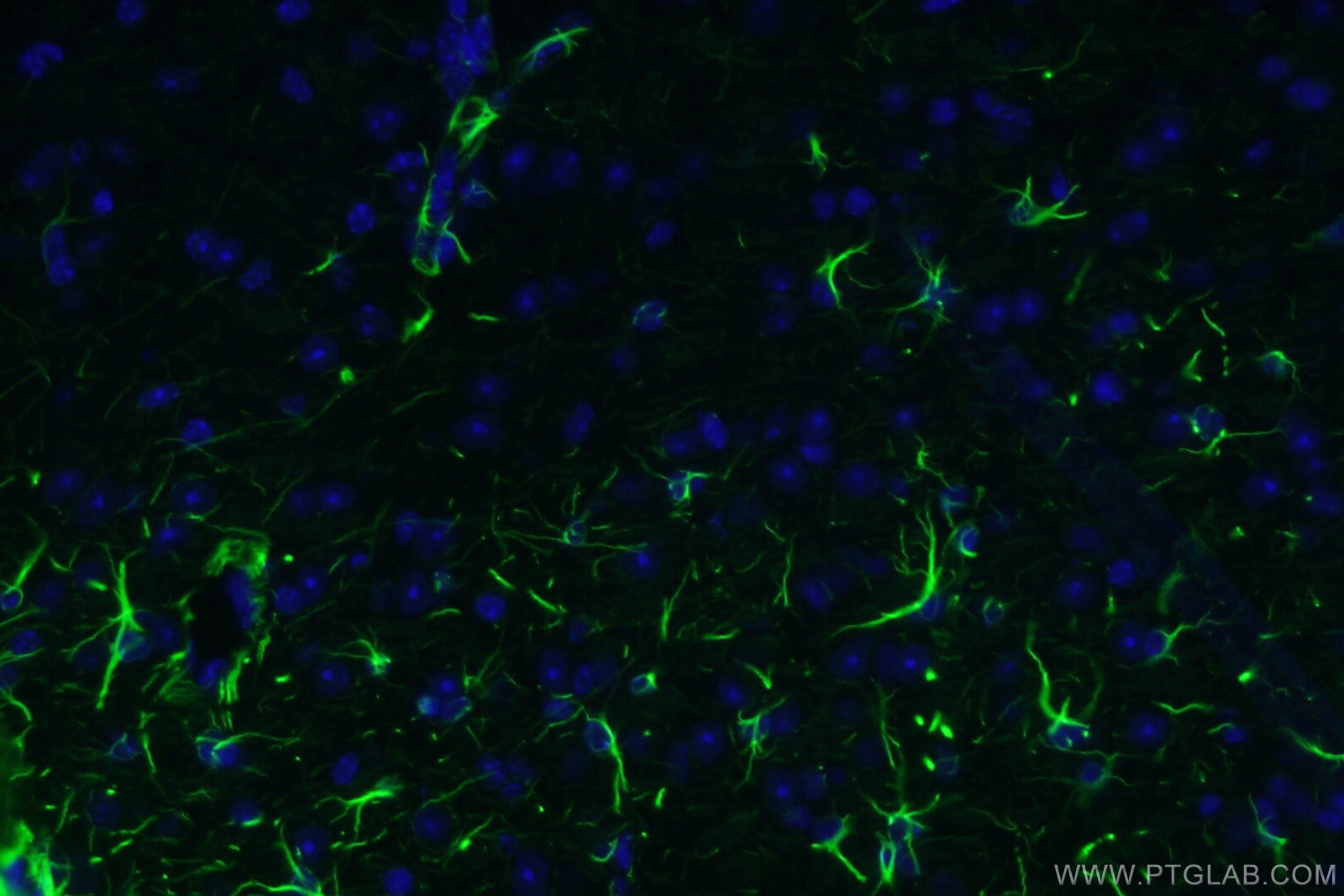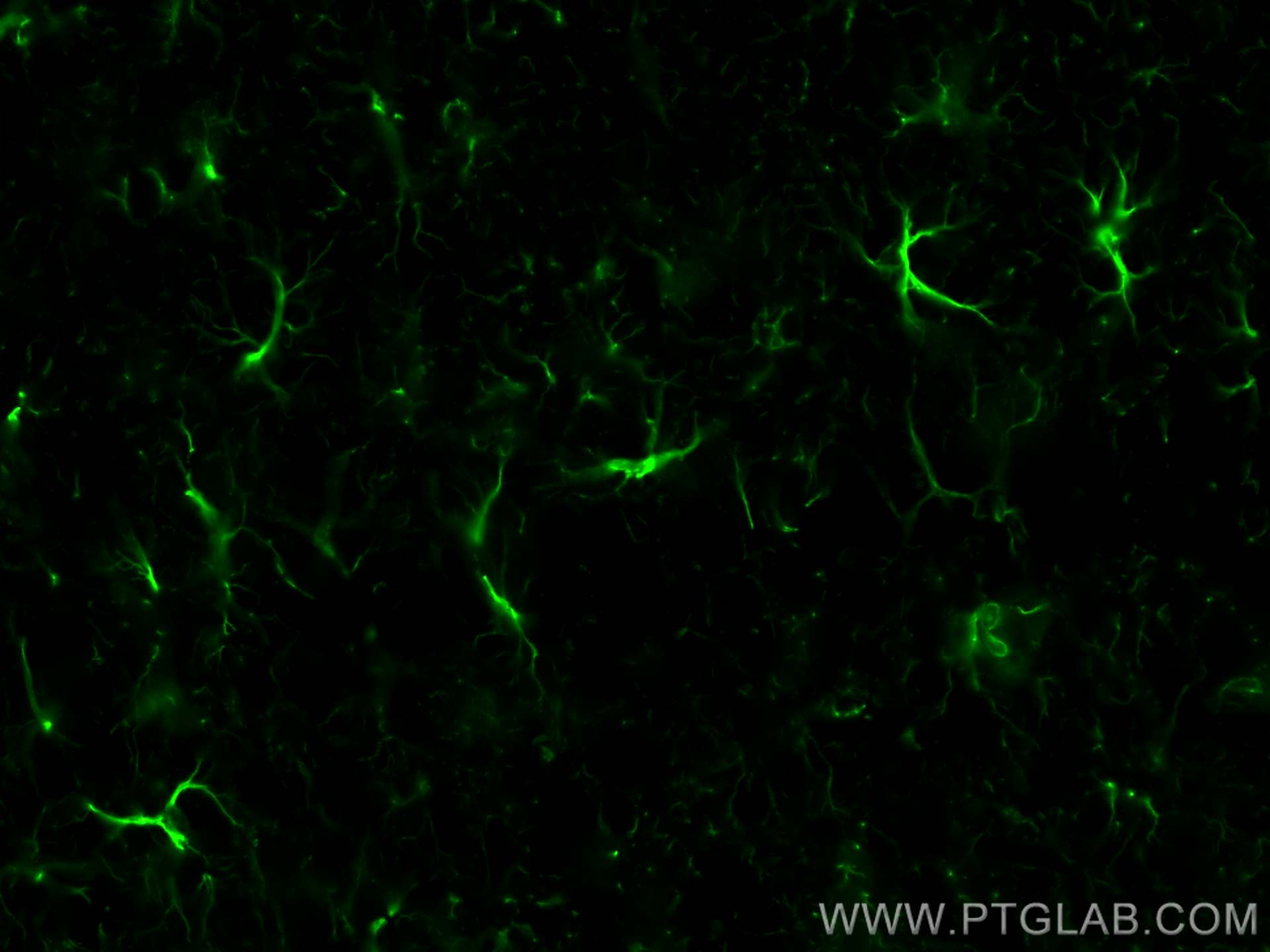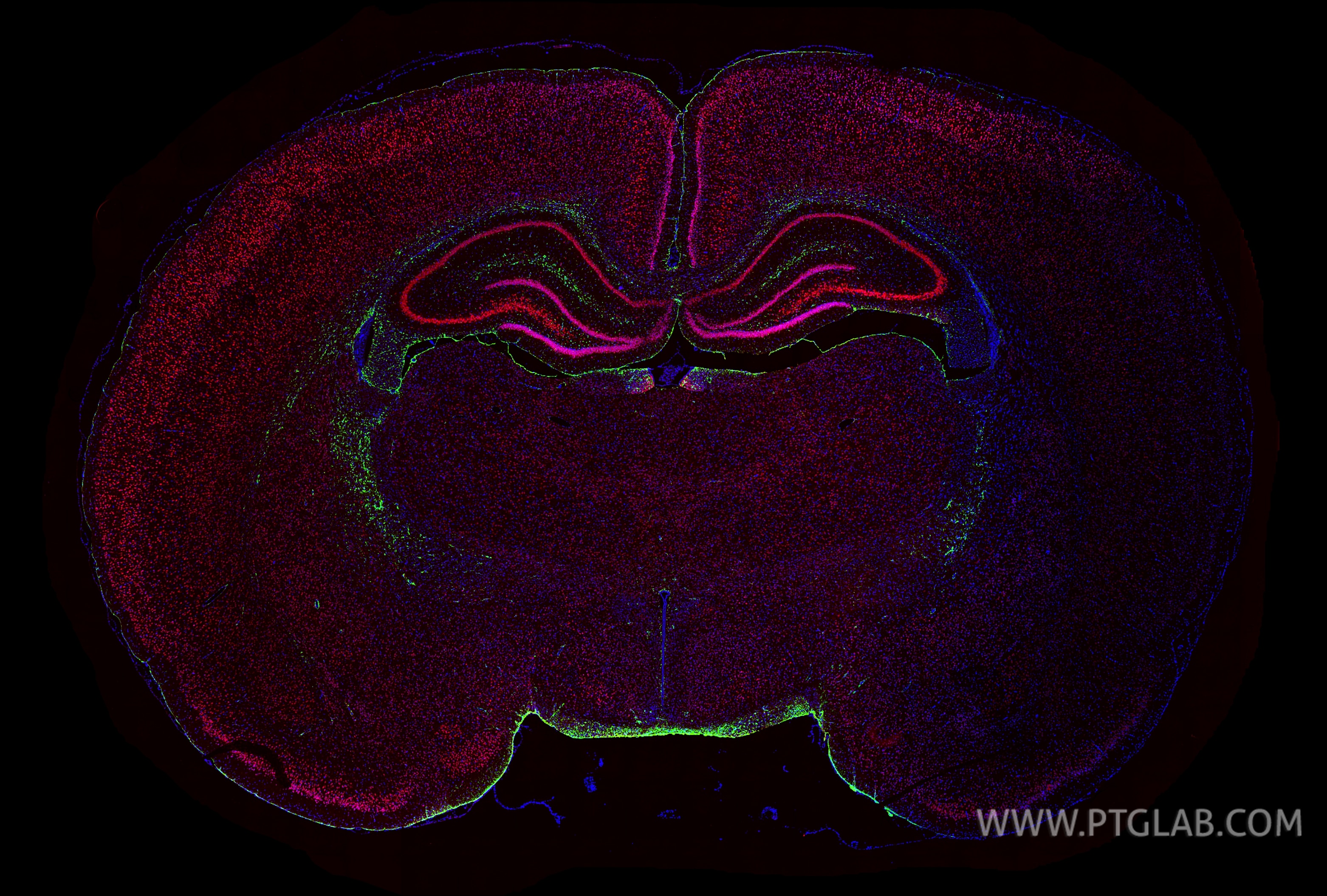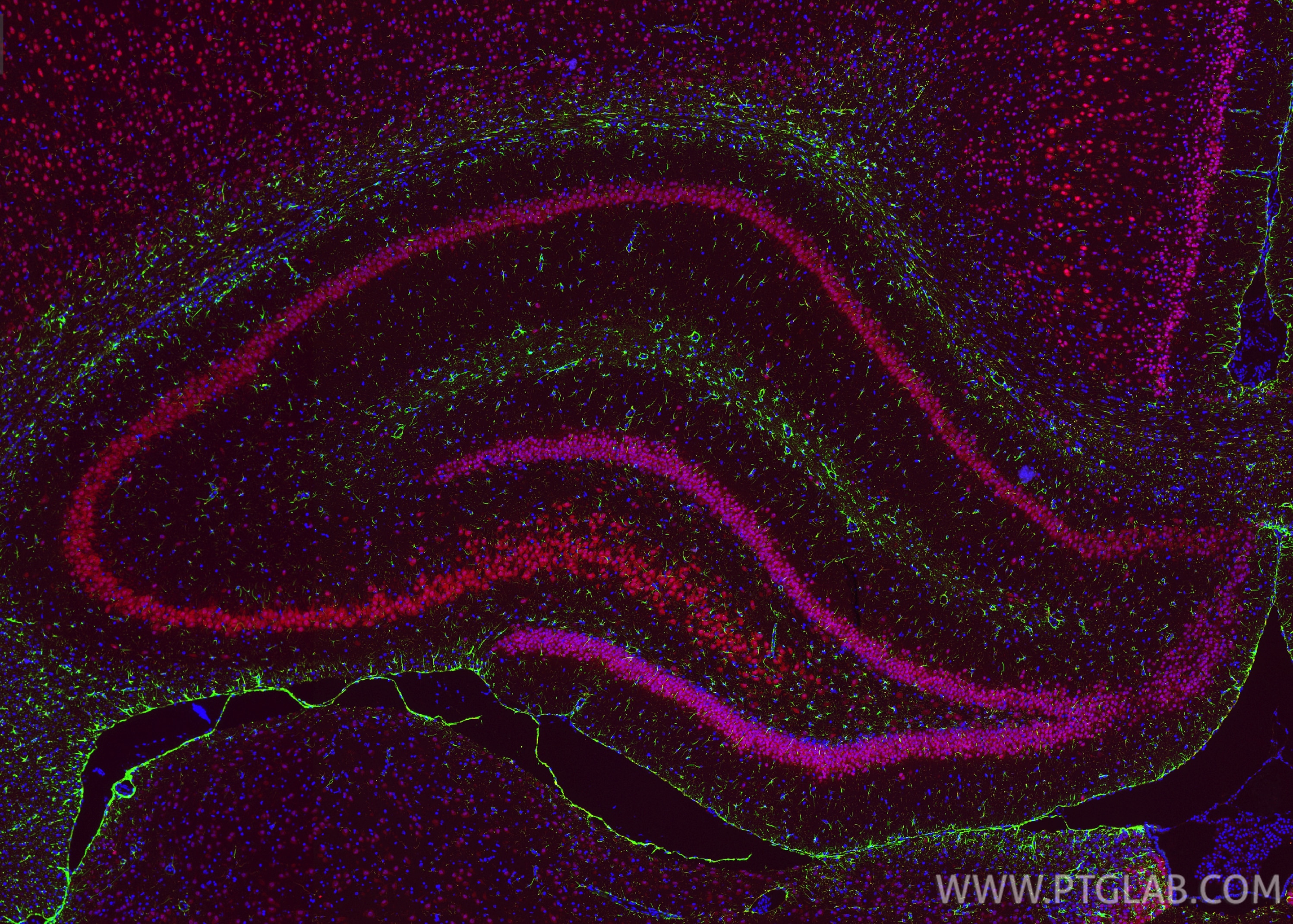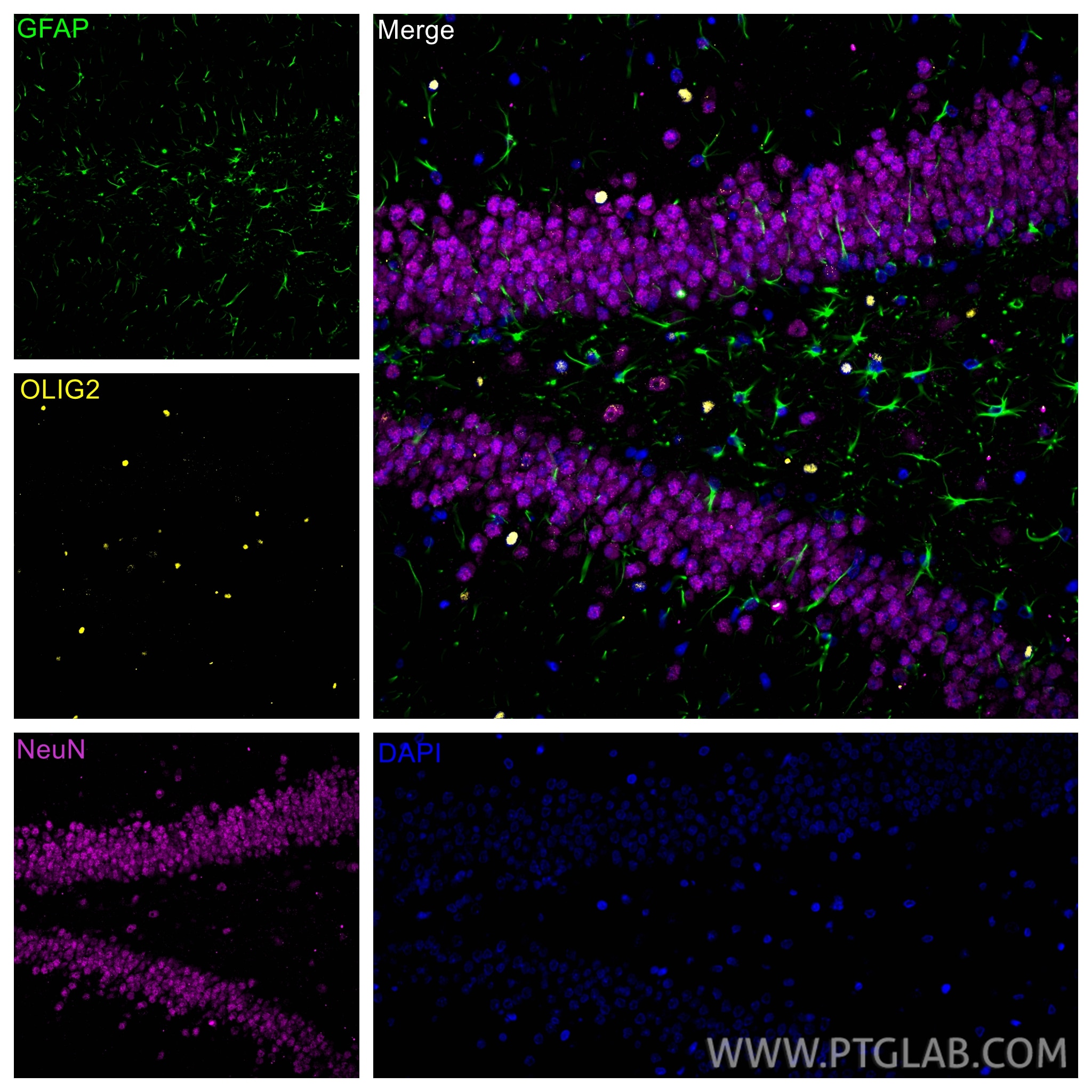GFAP Monoklonaler Antikörper
GFAP Monoklonal Antikörper für IF-P
Wirt / Isotyp
Maus / IgG2a
Getestete Reaktivität
Hausschwein, human, Maus, Ratte
Anwendung
IF-P
Konjugation
CoraLite® Plus 488 Fluorescent Dye
CloneNo.
4B2E10
Kat-Nr. : CL488-60190
Synonyme
Geprüfte Anwendungen
| Erfolgreiche Detektion in IF-P | Rattenhirngewebe, Maushirngewebe |
Empfohlene Verdünnung
| Anwendung | Verdünnung |
|---|---|
| Immunfluoreszenz (IF)-P | IF-P : 1:50-1:500 |
| It is recommended that this reagent should be titrated in each testing system to obtain optimal results. | |
| Sample-dependent, check data in validation data gallery | |
This antibody is not recommended for immunocytofluorescent assays. It is not suitable for frozen sections.
Veröffentlichte Anwendungen
| IF | See 6 publications below |
Produktinformation
CL488-60190 bindet in IF-P GFAP und zeigt Reaktivität mit Hausschwein, human, Maus, Ratten
| Getestete Reaktivität | Hausschwein, human, Maus, Ratte |
| In Publikationen genannte Reaktivität | Maus, Ratte |
| Wirt / Isotyp | Maus / IgG2a |
| Klonalität | Monoklonal |
| Typ | Antikörper |
| Immunogen | GFAP fusion protein Ag10452 |
| Vollständiger Name | glial fibrillary acidic protein |
| Berechnetes Molekulargewicht | 432 aa, 50 kDa |
| GenBank-Zugangsnummer | BC013596 |
| Gene symbol | GFAP |
| Gene ID (NCBI) | 2670 |
| Konjugation | CoraLite® Plus 488 Fluorescent Dye |
| Excitation/Emission maxima wavelengths | 493 nm / 522 nm |
| Form | Liquid |
| Reinigungsmethode | Protein-A-Reinigung |
| Lagerungspuffer | PBS with 50% glycerol, 0.05% Proclin300, 0.5% BSA |
| Lagerungsbedingungen | Bei -20°C lagern. Vor Licht schützen. Nach dem Versand ein Jahr stabil. Aliquotieren ist bei -20oC Lagerung nicht notwendig. 20ul Größen enthalten 0,1% BSA. |
Hintergrundinformationen
GFAP (Glial fibrillary acidic protein) is a type III intermediate filament (IF) protein specific to the central nervous system (CNS). GFAP is one of the main components of the intermediate filament network in astrocytes and has been proposed as playing a role in cell migration, cell motility, maintaining mechanical strength, and in mitosis. GFAP is expressed in central nervous system cells, predominantly in astrocytes. GFAP is commonly used as an astrocyte marker. However, GFAP is also present in peripheral glia and in non-CNS cells, including fibroblasts, chondrocytes, lymphocytes, and liver stellate cells (PMID: 21219963). Astrocytes express 10 different isoforms of GFAP that differ in the rod and tail domains (PMID: 25726916), which means that they differ in molecular size. Isoform expression varies during the development and across different subtypes of astrocytes. Not all isoforms are upregulated in reactive astrocytes. Intermediate filament proteins are regulated by phosphorylation. Six phosphorylation sites have been identified in GFAP protein, at least some of which are reported to control filament assembly (PMID: 21219963). GFAP localizes to intermediate filaments and stains well in astrocyte cellular processes. This antibody is conjugated with CL488, Ex/Em 488 nm/515 nm.
Protokolle
| PRODUKTSPEZIFISCHE PROTOKOLLE | |
|---|---|
| IF protocol for CL Plus 488 GFAP antibody CL488-60190 | Protokoll herunterladen |
| STANDARD-PROTOKOLLE | |
|---|---|
| Klicken Sie hier, um unsere Standardprotokolle anzuzeigen |
Publikationen
| Species | Application | Title |
|---|---|---|
J Neurosci Res Neuronal deficiency of hypoxia-inducible factor 2α increases hypoxic-ischemic brain injury in neonatal mice. | ||
Front Pharmacol Extracellular Vesicle-Mediated Delivery of Ultrasmall Superparamagnetic Iron Oxide Nanoparticles to Mice Brain. | ||
Front Neurosci Downregulation of m6A Methyltransferase in the Hippocampus of Tyrobp -/- Mice and Implications for Learning and Memory Deficits. | ||
Acta Biochim Biophys Sin (Shanghai) Cannabidiol alleviates the inflammatory response in rats with traumatic brain injury through the PGE 2-EP2-cAMP-PKA signaling pathway | ||
Brain Res Effects of cannabinoid (CBD) on blood brain barrier permeability after brain injury in rats. | ||
